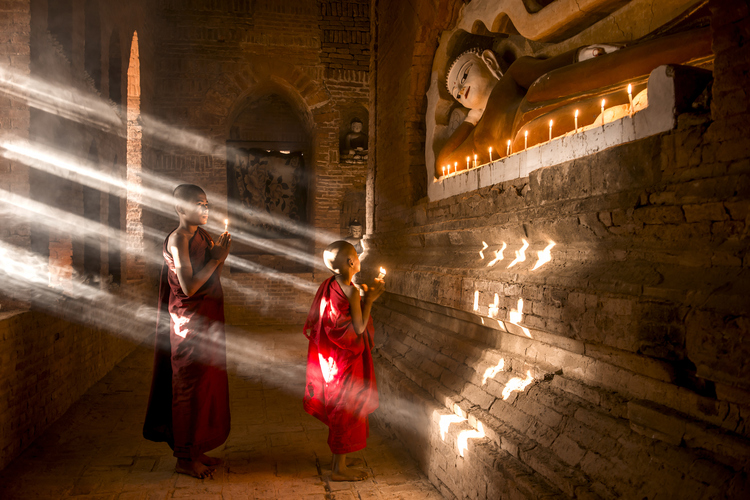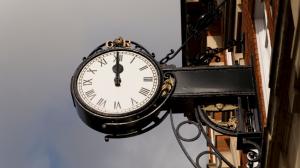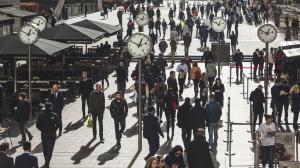
Best Comet of 2025?
C/2024 G3 (ATLAS) has already become very faintly visible to the naked eye for observers in the Southern Hemisphere.
Buddhist holidays are special occasions to commemorate important events in the life of Siddhartha Gautama (the Buddha), and to celebrate Buddhist teachings and practices.

©iStock.com/ugurhan
Buddhist holidays and observations often revolve around the life of Siddhartha Gautama, a religious teacher living around 500 BCE, who later became known as the Buddha (“the enlightened one”). Here are some important Buddhist holidays:
Buddhist holidays vary across traditions (Theravada, Mahayana, Vajrayana) and regions. Specific Buddhist communities may also celebrate additional holidays and customs.
Around 520 million people around the world follow Buddhist traditions. With roughly 7% of the world’s population, Buddhism is the fourth-largest religion on Earth.
Buddhism is the dominant religion in many countries in Southeast Asia and East Asia, such as Thailand, Cambodia, Sri Lanka, Japan, and Vietnam.
There are two main traditions within Buddhism: Theravada and Mahayana. Buddhists in Sri Lanka and other Southeast Asian countries, such as Cambodia, Laos, Myanmar, and Thailand, practice Theravada Buddhism, while those in East Asia, including China, Japan, Taiwan, and Vietnam, follow the Mahayana tradition.
Some, like the Theravada and Tibetan traditions, follow a lunar calendar to determine the dates of festivals and holidays. The dates are therefore not fixed in the Gregorian calendar.
Others, such as the Mahayana tradition, mostly observed in East Asia, have aligned their holy dates with the Gregorian calendar.
There is variation within a tradition as well. Some holidays, such as Buddha’s Birthday or Vesak, are celebrated on different dates in different countries. In China and Hong Kong, the holiday falls on the eighth day of the fourth month of the Chinese lunar calendar. In Japan, where it is called Hanamatsuri, it falls on April 8 every year.
The differences in Buddhist traditions also mean that the Buddhist year starts on different days in different parts of the world.
Those who follow the Mahayana school of thought celebrate the start of their New Year on the first Full Moon in the Gregorian month of January. On the other hand, people who subscribe to the Theravada tradition start their year three days after the Full Moon in April.
Full Moon names through the year
In the Tibetan Buddhist tradition, the start of the lunisolar calendar is also known as Lhosar (or Losar). It falls in April or May in the Gregorian calendar. In Nepal, a similarly named festival is celebrated on different days by different communities: Tamu Lhosar falls in December or January, Sonam Lhosar in January or February, and Gyalpo Losar falls in February or March.
Japanese Buddhists celebrate the Gregorian New Year on January 1 by ringing the temple bells 108 times at the stroke of midnight. And in Thailand, the New Year is celebrated as the Songkran Festival from April 13 to April 15 every year.
Vesak, also known as Wesak, Buddha Jayanti, or Buddha Purnima, is an important Buddhist festival that celebrates the birth, life, and death of Gautama Buddha. In the Mahayana tradition, the three events are commemorated separately on three different dates, including Bodhi Day (the day of Buddha’s enlightenment) and Nirvana Day (the day of Buddha’s death). On the other hand, in the Theravada tradition, these three events are observed on the same day, which falls on the Full Moon day of the month of Vaisakha. This corresponds to April or May in the Gregorian calendar.
In Tibet, Buddha’s birth, enlightenment, and death are commemorated on the 15th day of the fourth month (Saga Dawa) of the Tibetan lunar calendar. This day usually falls in June in the Gregorian Calendar. In Taiwan, the day is celebrated on the second Sunday of May and coincides with International Mothers Day.
In 1999, the United Nations made Vesak Day an annual UN observation.

C/2024 G3 (ATLAS) has already become very faintly visible to the naked eye for observers in the Southern Hemisphere.

How does the 12-hour clock system work? Is midnight 12 am or 12 pm?

Why do many countries set the clocks back and forth an hour twice a year?

Why are there 12 months? How long are they, and what do the month names mean?